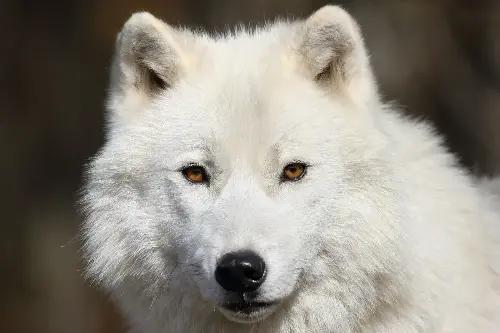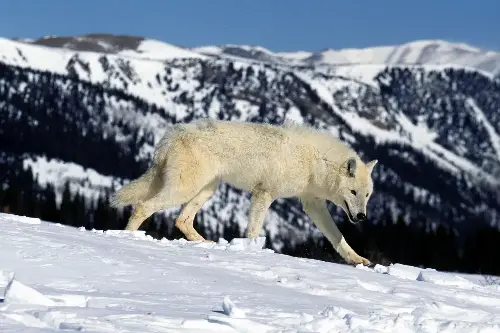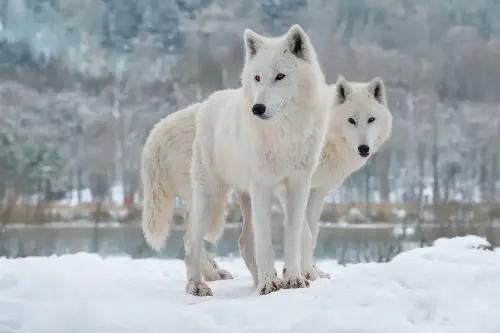Nestled within the pristine white canvas of the Arctic landscape, the Arctic wolf emerges as a figure of both beauty and resilience. Their ghostly howls pierce the silence of the snow-covered expanse, creating an enchanting atmosphere that speaks of mystery and survival. These majestic creatures, adapted to some of the harshest conditions on Earth, embody a fascinating natural wonder worthy of a closer look.
Arctic wolves, also known as white wolves or polar wolves, are a subspecies of the grey wolf and are native to the Queen Elizabeth Islands, part of the Canadian Arctic Archipelago. Unlike their southern relatives, Arctic wolves are cloaked in a thick, white fur that not only acts as camouflage against the endless snow but also provides essential insulation in temperatures that can plummet to an unforgiving minus 50 degrees Celsius.

Despite the brutal climate, these wolves have thrived where others would perish, largely due to their remarkable adaptations. Their compact bodies minimise heat loss, and their fur-covered paws allow them to tread effortlessly over the snow. Even their blood has adapted to the cold; a unique property of their haemoglobin allows it to efficiently release oxygen to their cells, even under the extreme conditions of their habitat.
What's perhaps most captivating is the social structure of Arctic wolves. Known for their tight-knit family groups called packs, they exhibit sophisticated levels of cooperation and hierarchy. These packs are often made up of a dominant breeding pair and their offspring from different years. It is this strong bond that enables them to work together to hunt their primary prey, muskoxen and Arctic hares, traversing vast distances in pursuit of these animals that are well adapted to eluding predators in a snowy environment.
The sight of an Arctic wolf hunting is a spectacle of precision and teamwork. They use a combination of keen senses and stamina to outmanoeuvre their prey, sometimes following it for miles before making a successful kill. Despite their predatory prowess, these wolves have a playful side, engaging in social behaviours like howling to communicate with pack members and maintain social bonds.

Howling, in particular, is integral to the identity of the Arctic wolf. These melancholic vocalisations serve multiple purposes: they can be a declaration of territory, a form of rallying the pack before a hunt, or a signal to reunite with separated members. In the dense fog and sweeping snow of the Arctic, howling becomes an essential and enchanting form of long-distance communication.
Arctic wolves are also phenomenal parents. They exhibit profound care and commitment, with both male and female wolves taking active roles in raising their young. They typically breed once a year, with litters consisting of one to four pups that are born blind and helpless. The survival of these pups depends on the pack, with all members playing a role in providing food and protection.
Due to their remote habitat, Arctic wolves are less threatened by human activity than other wolf species, though the effects of climate change pose a growing concern. As the Arctic ice diminishes, it disrupts the ecosystem balance, potentially affecting the availability of prey for these predators. Additionally, melting ice may open their territory to increased human exploration, exposing them to new dangers.

One of the lesser-known yet intriguing aspects of Arctic wolves is their longevity. In the wild, they can live up to 7 years, while in captivity, their lifespan can extend to 17 years. This discrepancy is largely attributed to the lack of threats in a controlled environment compared to the relentless challenges of the wild, where they must constantly battle for survival.
In conclusion, the Arctic wolf's existence is a testament to nature's ability to sculpt life in its most extreme environments. These wolves not only survive but flourish amidst the ice and snow, their ethereal howls a song to the resilience and interconnectedness of life in the Arctic. As time goes on, our understanding and appreciation of these captivating animals continue to grow, reminding us of the importance of preserving the wild and wondrous creatures that share our planet.
